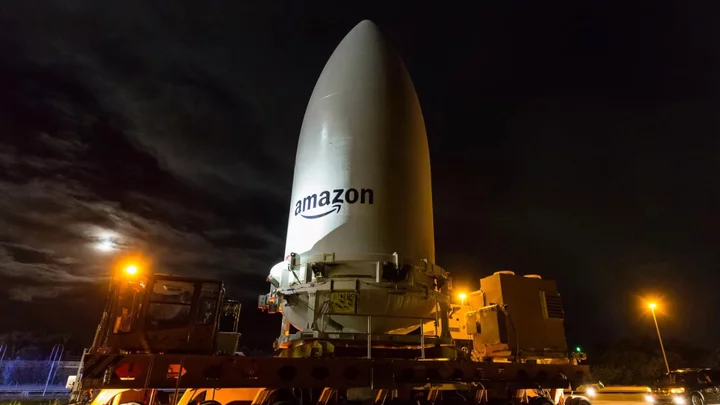Following several delays, Amazon’s first prototypes for its Project Kuiper satellite internet service are slated to launch into space on Friday, Oct. 6, Amazon partner United Launch Alliance (ULA) confirmed today.
The prototypes were originally supposed to fly on ULA's Vulcan Centaur rocket before the flight was canceled. ULA now says the test satellites will fly using an Atlas V rocket.
The company also published photos showing the preparations to fit an Amazon payload on the ULA rocket. The two prototype Project Kuiper satellites arrived the day before at the Cape Canaveral Space Force Station in Florida. Workers then hoisted the payload to fit on top of an Atlas V 501 rocket, which stands 196 feet tall.
(Credit: ULA)The launch is important for Amazon since the company is aiming to start serving its first customers through Project Kuiper next year. But before Amazon can do so, it needs to verify the performance of the company’s internet satellites.
“The prototypes of the final Kuiper satellite design will allow Amazon to test its technology in space before beginning full-scale production launches next year,” ULA says.
(Credit: ULA)Project Kuiper is poised to compete against SpaceX’s satellite internet network Starlink, which is already capable of beaming high-speed internet to users almost anywhere on the Earth’s surface. But Amazon has some serious catching up to do. Starlink already has over 2 million customers using a network that spans nearly 4,800 active satellites.
In contrast, Project Kuiper has yet to launch a single satellite. But Amazon plans on changing that soon. ULA notes that the company will use nine Atlas V launches, in addition to 38 launches over the upcoming Vulcan Centaur rocket, to deploy its satellites.
“The prototype mission gives ULA and Amazon practical experience working together ahead of full-scale launches, including processing procedures, payload integration and mission management,” ULA added.
For this upcoming launch, ULA plans on placing the prototypes satellites, Kuipersat-1 and Kuipersat-2, in an orbit at 311 miles above the planet. Barring bad weather, the prototype satellites are set to fly on Oct. 6 during a 2 p.m. ET launch window.

